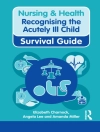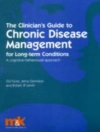Every DSM-5 diagnosis includes an exclusion criterion that the disorder is not better explained by a medical condition. Meeting this criterion can be difficult for a variety of reasons. The psychiatric signs and symptoms of medical disorders are not commonly emphasized in medical textbooks. Further, illness scripts for medical diagnoses do not often overlap with psychiatric disorders, making it difficult to know what medical conditions should be ruled out. For example, irritability is a common symptom in polycystic ovarian disorder, but PCOS is rarely on the differential for irritability. Similarly, while hypothyroidism is commonly linked to the illness script of depression, patients with MDD may be just as likely to have diabetes – an infrequently considered diagnosis for depression. “Buzzword” medical conditions that are commonly prioritized in medical student training can negatively influence classic illness scripts. While such diagnostic possibilities make for good multiple-choice questions, they are frequently rare and may inadvertently undermine important common possibilities. For example, a patient with chest pain in the context of anxiety is more likely to have asthma, acute coronary syndrome, or even a pulmonary embolism than pheochromocytoma.
In a recent white paper issued by the American Psychiatric Association, it has urged psychiatrists to better advocate for patients with severe mental illness who often lack access to primary care. But some psychiatrists may be unfamiliar with physical exam maneuvers and medical review of systems (ROS) questions. Complex medical systems may delegate the physical exam to physicians outside of psychiatry, or there may be a temptation to rely on the emergency room’s “medical clearance” as a “medical rule-out.” Both can result in decreased familiarity with physical exam techniques previously mastered as part of medical school. A cursory review of the physical exam maneuvers and concise symptom-based medical ROS lists can alleviate some of these concerns.
This book is intended to provide psychiatrists and physicians who routinely evaluate psychiatric symptoms with the tools needed to rule out medical conditions that could be causing those symptoms. It will start with an introduction that reviews why the text is needed and potential larger gaps in training that might contribute to the necessity for such a text. Each chapter thereafter will focus on a specific symptom. Each symptom will be defined to ensure accuracy. Then a differential of common medical conditions that can cause that psychiatric symptom will be provided. For each diagnosis key history, physical exam, laboratory, and radiologic findings will be provided that help rule the condition out. Screening tools that can help rule out medical etiologies will also be provided. Where available, positive predictive values (PPVs) will beprovided to help users understand the likelihood that a negative finding or result indicated that a medical disorder is not present.
While individual aspects of this text exist in other formats, the comprehensive nature of our approach, descriptions of psychiatric symptoms to means of ruling out potential medical etiologies, is not currently available to providers. This text will assist providers in ruling out medical etiologies of common psychiatric symptoms, ensuring patients are diagnosed correctly. Such an improvement has the potential to dramatically improve patient outcomes.
Spis treści
Section 1: Comorbidity of psychiatric symptoms and medical illness.- How psychiatrists are trained to think (disorders vs diagnoses).- Gap in training/thinking.- Section II: Symptoms.- Depression.- Insomnia.- Fatigue/Low Energy.- Anxiety.- Decreased Appetite.- Irritability.- Psychosis.- Elated Mood.
O autorze
Eric Meyer MD, Ph D Uniformed Services University of the Health Sciences Department of Psychiatry Bethesda, MD Dr. Eric Meyer is the Psychiatry Consultant to the US Air Force Surgeon General and Deputy Director of AF Mental Health Operations. He is also an associate professor of Psychiatry, Neuroscience, and Military & Emergency Medicine at the Uniformed Services University (USUHS). He recently completed a Ph D in Health Professions Education, with a focus on the use of Entrustable Professional Activities in Undergraduate Medical Education. He previously served as the Medical Director for the 51st Mental Health Squadron at Osan Air Base, Republic of Korea. Building on that operational experience, Dr. Meyer is a lead instructor for the Defense Institute for Medical Operation’s (DIMO) “Military and Disaster Mental Health” course, which he has delivered to coalition forces around the globe. As part of this interest, he has also published extensively on military cultural competence.












